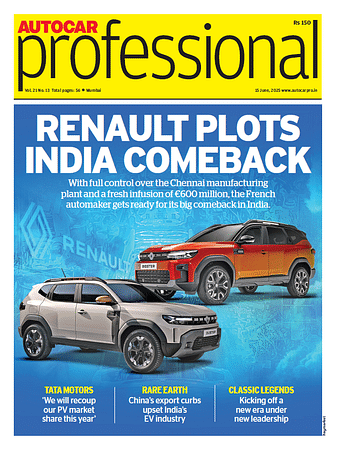Mercedes-Benz May Hike Prices Again If Forex Woes Persist: CEO Santosh Iyer
Mercedes Benz India braces for currency headwinds but strong market sentiment and localisation efforts offer cushion amid sliding rupee.
Mercedes-Benz India may be forced to undertake further price hikes if the rupee’s depreciation against the euro continues to worsen, Santosh Iyer, Managing Director and CEO of the company, told Autocar Professional. The German luxury carmaker has already announced price hikes across its entire model range, with the first wave coming into effect from June 1 and another scheduled for September 1. The company could see more price increase if the situation persists.
"In the automotive industry, we have to learn to live by day and month planning. Gone are the days of long-term planning. The euro to the rupee ratio has seen a 12% increase. It has happened over a period of time. We were hopeful that it'll come back but it has only seen worsening in terms of depreciation. We hope it'll come back. That's why we've not [implemented] price increases to fully compensate for the depreciation," Iyer said.
Over the last four months, the Indian rupee has lost significant ground against the euro, driving up import costs for completely built units (CBUs) as well as components used in local assembly (CKDs). While the company has absorbed some of this pressure so far, it is now passing a portion of the cost to customers.
Last month, Mercedes-Benz India had announced a two-stage price increase for several key models including the C-Class, E-Class, GLC, GLE, GLS, EQS, and Maybach S-Class. The first phase began in June, with the next slated for September.
To cushion the blow of forex volatility, Mercedes-Benz is also ramping up local production efforts. “We’re also improving localisation as much as possible. E-Class, for example, the entire glass is localised. But it's difficult. Localisation needs volumes and scale,” Iyer said.
He added that some relief may come from the Reserve Bank of India’s monetary policy stance. “What’s positive in all of this is the RBI reducing interest rates. 60% of people buy cars on finance, their EMI is not going up. Hopefully, we'll pass on this benefit to the market. Could see more if it persists.”
Despite these headwinds, Iyer said that the company had a "promising" Q2, navigating through geopolitical instability and inflation. “Full year will be flattish between the -1 to +3 kind of a corridor depending on festive season and last year's base effect. For the growth to happen, macroeconomy has to be stronger," he adds.
He also flagged the upcoming Free Trade Agreements (FTA) as a potential tailwind for CBUs. “With FTA coming in, CBUs will be cheaper than other parts of the world,” Iyer said.
RELATED ARTICLES
Kia India Launches Nationwide Ownership Service Camp Across 329 Cities
Running until July 1, 2025, the service camp covers 445 workshops and offers discounts on services, accessories, and war...
Government Issues Notification to Mandate ABS, 2 Helmets in All 2-wheelers
Anti-lock Braking System (ABS) will become mandatory for all two-wheelers manufactured from January 1.
Vedanta Metal Bazaar Records Rs 40,000 Crore in Total Sales on National MSME Day
The platform, now serving 60% MSMEs, simplifies non-ferrous metal procurement with real-time tracking, hedging tools, fl...





 27 Jun 2025
27 Jun 2025
 295 Views
295 Views





 Sarthak Mahajan
Sarthak Mahajan


 Kiran Murali
Kiran Murali


